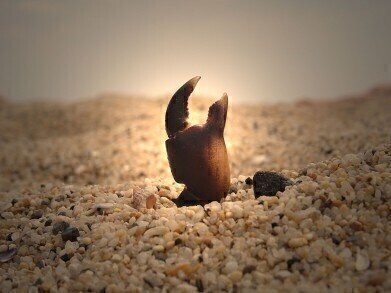Environmental Laboratory
How Does Climate Change Affect Invasive Species?
Aug 25 2020
Invasive species can be defined as flora or fauna that is not native to the environment in which it now resides, and which has spread to such an extent that it negatively impacts the ecosystem around it. With the rise of international trade, shipping and flights, invasive species have become more and more common all across the globe, causing myriad problems for the native plants and animals in their new habitats.
While the undesirable effects of invasive species are well-documented, it’s not fully understood how these organisms are affected by the changing conditions of the global environment. Climate change has led to, among other things, increased temperatures, ocean acidification and loss of habitat for many animals, but how does it impact upon invasive species? A team of experts from across the globe sought to address the issue in a recent study entitled Exploring larval phrenology as predictor for range expansion in an invasive species.
Unwelcome visitors
Invasive species are characterised by their tendency to propagate in their new environment so much that they prey upon other animals or plants that are beneath them in the food chain, often decimating their populations. This is not only devastating for the prey, but also for other predators that feed upon them, since their food source is being heavily compromised. As such, invasive species can cause havoc with the natural order of an existing ecosystem.
The Asian shore crab (Latin name Hemigraspus sanguineus) is a prime example of such behaviour. Native to the Pacific Ocean, the crabs have since spread to all four corners of the globe, often displacing the native crab populations, as has been witnessed in the shape of the European shore crab (Latin name Carcinus maenas). As such, the Asian shore crab makes for an excellent case study in how invasive species are responding to the onset of climate change.
Highly adaptable
Having travelled across continents and oceans, invasive species have generally developed a resistance to fluctuations in salinity and temperature that is not often present in stationary species. This means that they are likely to be less affected by the impact of climate change upon water quality than other organisms might be and gifts them a unique advantage. However, it has been found that the younger members of the species may be more susceptible than their older counterparts, so the authors of the study decided to focus on the larvae of the Asian shore crab for their study.
By monitoring the larvae’s developmental parameters (the time it took to mature and its survival rate) in various different temperatures and feeding this data into a sophisticated mechanistic model, the team were able to ascertain the exact threshold at which the larvae are able to successfully grow into juvenile crabs. Their findings showed that climate change is only likely to help the Asian shore crab spread further north as waters become warmer, potentially invading northern England and parts of Norway. While not conclusive, the study could shed light on the future behaviours of other invasive species, too.
Digital Edition
IET 34.2 March 2024
April 2024
Gas Detection - Biogas batch fermentation system for laboratory use with automatic gas analysis in real time Water/Wastewater - Upcycling sensors for sustainable nature management - Prist...
View all digital editions
Events
Apr 30 2024 Melbourne, Australia
Apr 30 2024 Birmingham, UK
May 03 2024 Seoul, South Korea
May 05 2024 Seville, Spain
May 06 2024 Minneapolis, MN, USA


















